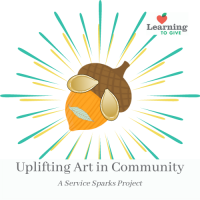In this activity, participants learn an effective and thoughtful process for creating positive change. Young people relate advocacy to philanthropy as a way to constructively impact social change.
In this activity, participants explore how to have productive board meetings using feedback in the form of process comments.
In this activity, participants reflect on their beliefs and feelings about philanthropy. This activity helps participants practice speaking up for issues they are passionate about and dialogue with others on the topic. This activity can help a group come to a consensus through speaking up about their values and interests.
In this activity participants learn the importance of asking questions and using two-way communication.
This simulation helps youth participants make choices and determine how to best use financial resources to support a cause. Through reflection and discussion, they explore what influences their giving and how to use resources for make a greater impact.
Ignite meaningful action that lights up the world through "Service Sparks" youth projects! Have fun making creative art from natural or recycled items. Give the art to someone to brighten their day.
Ignite meaningful action that lights up the world through "Service Sparks" youth projects! Learn about plants that grow in your area and the best growing conditions, then grow something from seeds and give the plant to cheer someone's day.
Ignite meaningful action that lights up the world through "Service Sparks" youth projects! Research different ways inequity showed up during the pandemic. Use writing to communicate an idea to make one inequity a little more fair.
Ignite meaningful action that lights up the world through "Service Sparks" youth projects! Look for items in nature from a shared list with only an hour to search, then connect with people virtually or in person to compare what you found and share ideas about the joy of nature. Shared with us by our friends at the Fetzer Institute
Ignite meaningful action that lights up the world through "Service Sparks" youth projects! Make a decision as an extended family (or connected friends) to donate to a nonprofit everyone cares about. Each person can donate what they can afford and want to give. This family activity brings together passions and hearts for doing good.




